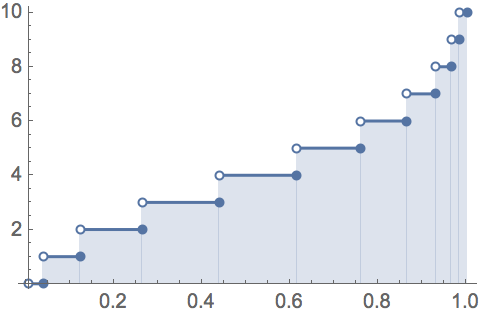The inverse cdf method also operates for discrete support distributions: by defining the generalised inverse as
$$F^{-1}(u)=\inf\{x;\ F(x)\ge u\}$$
the distribution of $F^{-1}(U)$ is $F$ when $U$ is Uniform(0,1), as in the image below for a Poisson distribution (from Wolfram):
$\qquad\qquad$
The reason is that
$$\Bbb P(F^{-1}(U)\le x)=\Bbb P(U\le F(x))=F(x)$$
For instance, if $F$ is supported by integers, like a Poisson distribution, and if$$U\le F(0)=\Bbb P(X=0)$$then $F^{-1}(U)=0$. Similarly, if$$ F(0)<U\le F(1)=\Bbb P(X=0)+\Bbb P(X=1)$$then $F^{-1}(U)=1$. And so on.
Another way to look at the same answer: if $X$ is distributed on the integers with probabilities $p_0$, $p_1$, &tc., simulating a realisation of $X$ means selecting $0$ with probability $p_0$, $1$ with probability $p_1$, &tc. Hence, to implement the simulation, one need generate a Uniform (0,1) variate u and, if $u\le p_0$ [which happens with probability $p_0$], set $X=0$, else if $p_0< u\le p_0+p_1$ [which happens with probability $p_1$], set $X=1$, &tc.

